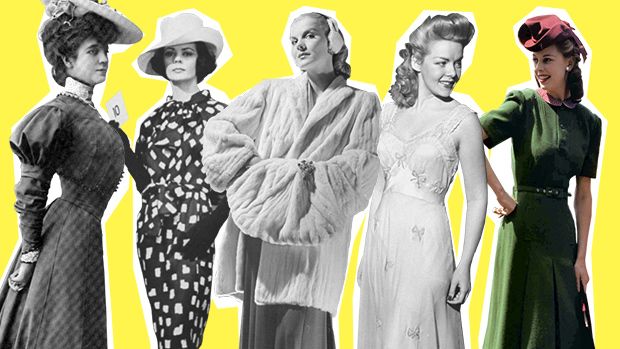Celebrating Style: The History of Fashion Week
From the salons of Paris to the streets of New York, we give you the evolution of one legendary event.

1. The Chic Capital, 1858
Fashion designer Charles Frederick Worth started showing clients a pre-prepared selection of original designs in Paris, forming the idea of a collection. He shocked his audiences by presenting his clothing on real, live women, thus creating the role of models. These "fêtes" continued throughout the 20th century, bringing in elements of staging and music.
2. Across the Pond, 1903
To gain interest from female shoppers, a New York City shop called Ehrich Brothers put on what's thought to be America's first fashion show. Within years, many big department stores were holding shows of their own, drawing inspiration from the idea of "fashion parades" done in Paris couture salons.
3. And So It Begins, 1943
Up until this point, American designers had been thought to rely on the French for inspiration. When World War II made it unable for the industry's elite to travel to Paris, Eleanor Lambert launched the first "Press Week," to showcase American designers. This led fashion journalists to cover more domestic designers.
4. Save the Date, 1944
Soon after, Ruth Finley launched the first Fashion Calendar, compiling all of the week's events into one comprehensive guide. This brought together all facets of the fashion and beauty industries, including buyers, manufacturers, designers, and editors around a single itinerary.

5. An Art Form, 1962
As Fashion Week grew, the importance of fashion design grew in the United States. Lambert continued to revolutionize the industry when she formed the Council of Fashion Designers of America, which furthered fashion's position as a recognized branch of American art and culture and supported the growth of American fashion in the world's economy.
6. Now Trending, 1975
Designers continued showcasing their collections twice a year in September and Feburary in an event that would eventually become known as New York Fashion Week. Other cities caught on, with Milan starting its own fashion week in 1975 and London following in in 1984.
7. Bigger and Better, 1994
Previously, the fashion shows were held at various locations including hotels, lofts, galleries, nightclubs, and restaurants, until a loft ceiling collapsed during a show, calling for an upgrade. The event was moved to Bryant Park, introducing its famous white tents, exclusive invites, A-list celebrity sightings, and big sponsors like Mercedes-Benz. The event got so large that it was then moved to Lincoln Center in 2010.
Get exclusive access to fashion and beauty trends, hot-off-the-press celebrity news, and more.
8. Fast Forward, 2014
Today, Mercedes-Benz Fashion Week remains one of the most important weeks of the year for those in the fashion industry, as well as for those who are simply fashion-obsessed. With increasing technology, anyone can watch live streams of certain shows and gain access to the backstage action with just a scroll through their social media feeds.
Related:
Two-Piece Wonder: The History of the Bikini
Pucker Up: The History of Red Lipstick
Stay Shady: The History of Sunglasses
Telling Talons: The History of the Manicure
Photo Credit: Getty Images, last two photos courtesy of Kathryn Wirsing